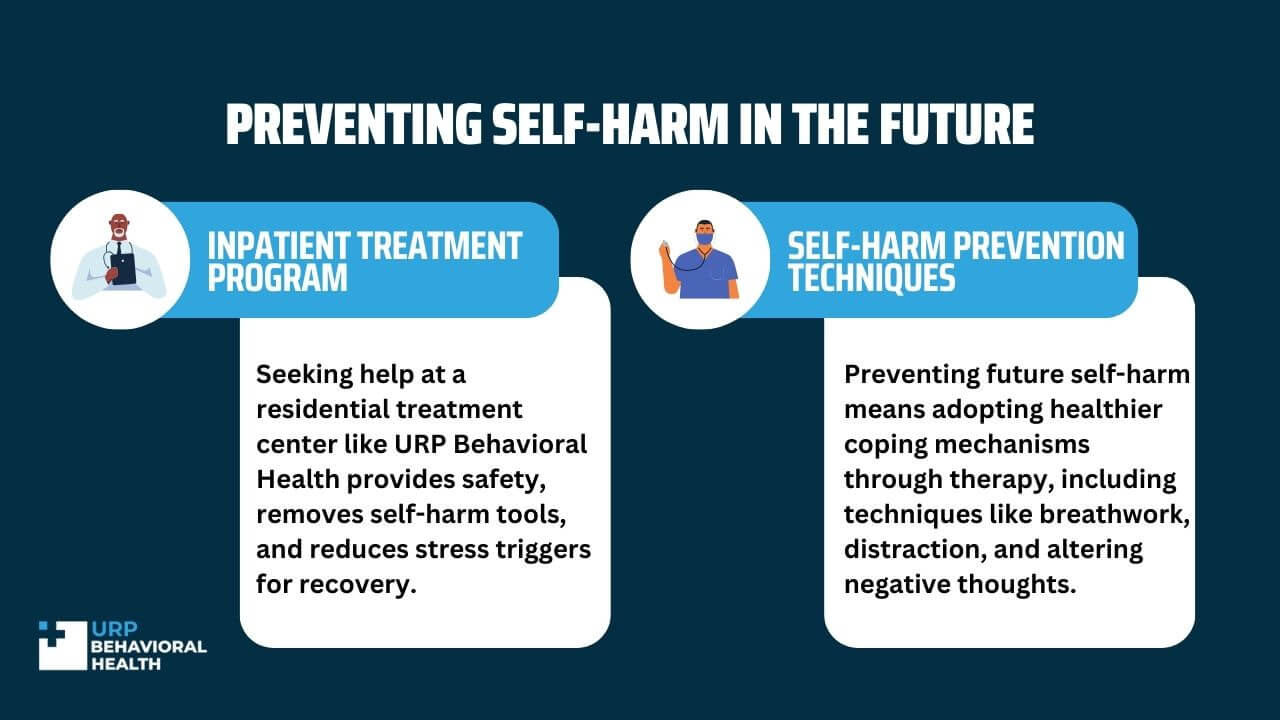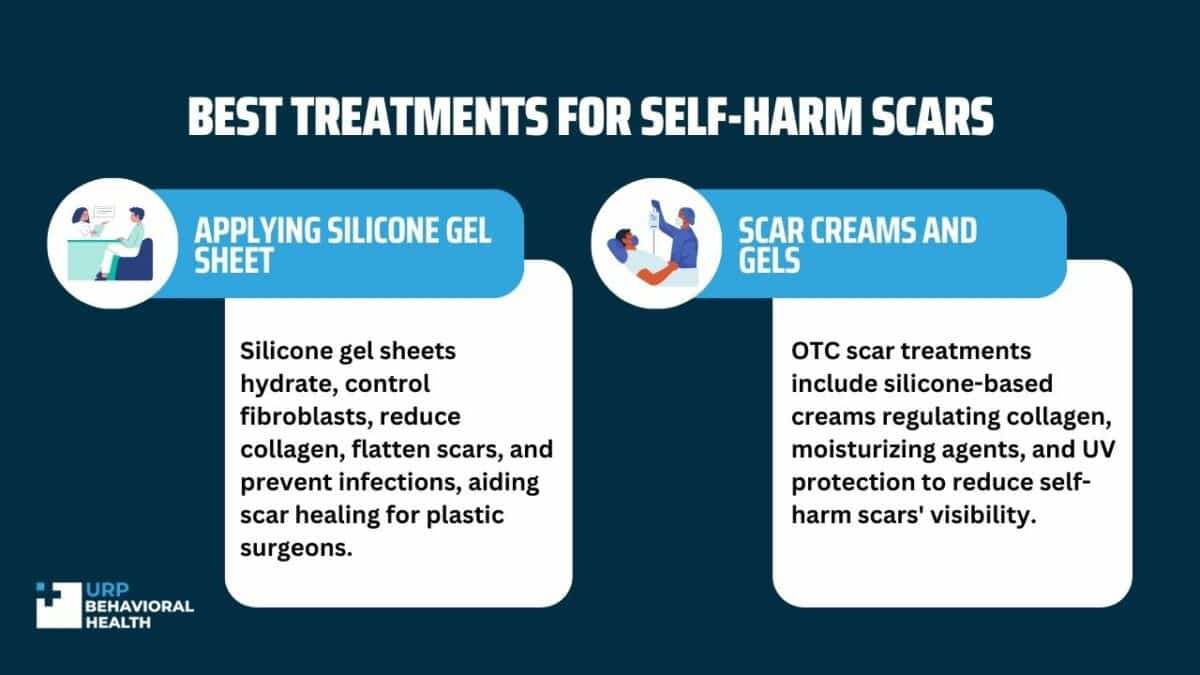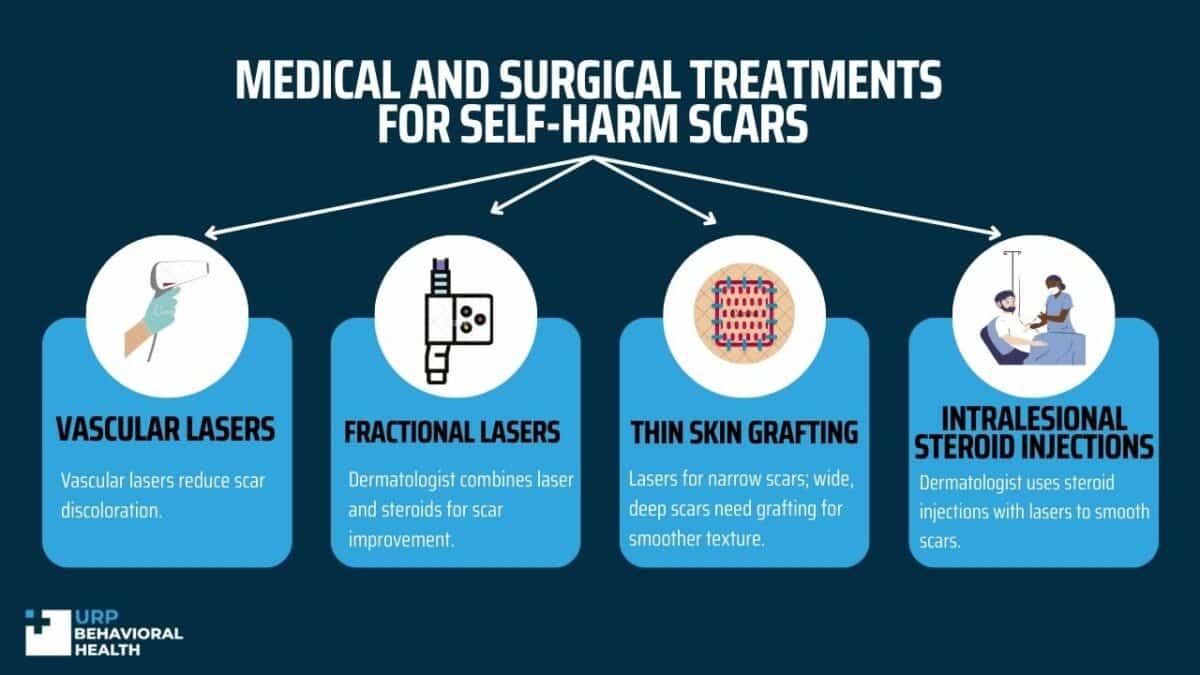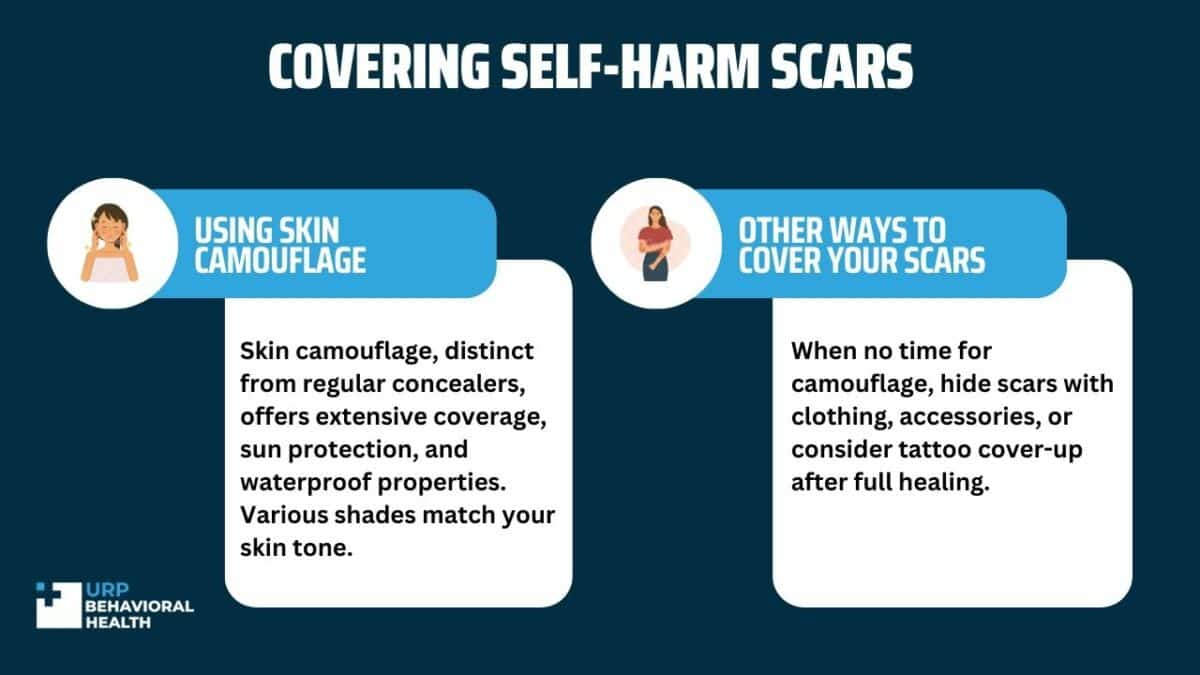
How to Get Rid of Self-Harm Scars
Statistics on the prevalence of non-suicidal self-injury show that many people engage in self-harm. Approximately 17 percent of people are likely to engage in self-harm behavior during their lifetime.
Some forms of self-harm don’t leave visible scars, like substance abuse, restricted eating and engaging in risky behavior. However, the most common form of self-harm includes cutting, which leaves prominent scars. These can remind you of painful and overwhelming memories. And they can lead to intrusive questions and stares from acquaintances and strangers.
That’s why most people prefer to get rid of their self-harm scars through OTC, surgical, or cosmetic treatments. Let’s discuss some of the most common methods for getting rid of these scars and moving toward recovery.
What is Self-Harm?
Self-harm means deliberately hurting your body through ways like hitting, cutting, or burning yourself. For people who struggle with painful and overwhelming emotions, self-harm is a way to cope. SAMHSA explains that people engage in self-harm as a way to escape uncomfortable feelings while giving them a sense of relief.
It’s also described as non-suicidal self-injury or NSSI, which is when you hurt yourself without the intention of committing suicide.
Preventing Self-Harm in the Future

While treating your scars is part of the emotional healing process, you should also focus on recovering with help from a professional. After all, if you’re getting an extensive medical procedure like laser treatment for self-harm scars, you want to ensure that you avoid self-injuring behaviors in the future.
Enrolling in an Inpatient Treatment Program
Among people who self-harm, some stop after a few instances, while others have trouble stopping. If you’re concerned that you won’t be able to stop self-harming behaviors and risk exacerbating your wounds, enrolling in a residential treatment program can help.
An inpatient treatment center such as URP Behavioral Health is designed to keep you in a safe environment. During a treatment program, you won’t have access to tools used for self-harming, such as razors, lighters, etc. You’ll also be away from potentially stressful situations that could cause you to self-harm as a way to cope.
Self-Harm Prevention Techniques
Of course, a major part of preventing self-harm in the future involves learning to cope with stress in a less harmful and potentially healthier way. After all, distress is inevitable, but how you respond to it can change. Once you start working with psychotherapists and holistic therapists, you’ll learn different strategies like breathwork, distracting yourself, and changing negative thought patterns as a way to prevent self-harm.
Best Treatments for Self-Harm Scars

When left untreated, cuts and burns that arise because of self-harm behaviors take longer to heal and leave permanent scars. That’s why medical professionals at mental health centers like URP Behavioral Health recommend treating it as soon as possible to prevent the risk of scarring. By addressing the wound sooner, you reduce the likelihood of a prominent, raised scar.
Many people who engage in self-harm behavior avoid seeing a professional for their injuries. So, rest assured that there are some over-the-counter treatments you can try. It’s best to keep the necessary items nearby, so you have them on hand. This is part of harm minimization, which helps you stay safe when you decide to self-harm.
Applying Silicone Gel Sheet
Silicone is one of the oldest methods of treating scars and is often considered the first line of treatment by most plastic surgeons. Cut or burned skin heals by producing collagen, which gives the skin its firmness. But cuts can lead to excessive collagen production, resulting in a raised scar with discoloration.
When you apply a silicone get sheet, it increases the hydration of the skin’s uppermost layer. It also keeps fibroblast production under control as a way to reduce collagen. With less collagen, the skin can breathe, which leads to a flatter and less prominent scar. And it protects your scar from bacterial infections, which can increase collagen production to make the scar more prominent.
Scar Creams and Gels
Other over-the-counter scar treatments include creams, ointments, and gels formulated to encourage healing while disrupting scar formation. Most effective creams used to treat self-harm scars contain silicone, which regulates collagen production, so you get flatter scars with less discoloration.
They may also contain other compounds like mineral oil, lanolin, and petrolatum, which lock in moisture. Scar tissue is highly sensitive to UV rays and dehydration, so it tends to become dry easily. Dryness can cause itching, and this can worsen the appearance of your scar. That’s why doctors recommend moisturizing the area with a specialized oil can prevent a scar from forming.
Medical and Surgical Treatments for Self-harm Scars

If you don’t use immediate treatment methods for cuts and allow the healing process to continue on its own, it will result in scars. You can’t get rid of months-old scars using over-the-counter treatments. In this case, you’ll need surgical treatments to reduce and lighten the appearance of your scar and make it less prominent.
There are different types of surgical procedures, but you should start by visiting a dermatologist and having them take a look at your scars. When it comes to self-harm scars, the aim of surgical treatment is to reduce the patterning of parallel cuts and scars because they’re associated with the image of cutting scars.
Vascular Lasers
Scars from cuts or burns get their dark color because of abnormal blood vessels under the skin’s surface. While it’s not possible to eliminate the scar entirely, vascular lasers can reduce the extent of discoloration to make them less prominent. They target unwanted blood vessels under the skin to treat hypertrophic scars.
This laser treatment is highly effective at addressing color changes, specifically red scars. If your scars are white, they may not respond to laser treatment as they’re more complex and may require surgery.
Fractional Lasers
This is recommended if your cuts or burns left behind raised, red scars that feel itchy at times. Fractional laser treatment works by making tiny holes in the skin, encouraging collagen production.
In a way, your scar will get a second chance to heal, and you’ll get a smoother, flatter scar as a result. This is also known as laser resurfacing. This laser treatment also works on surrounding skin, so your scar blends in naturally.
Thin Skin Grafting
Laser treatment is only effective for narrow cuts and burns, so deeper and wider scars require skin grafting. That’s because they occur as a result of deep cuts that enter the bottom layers of your skin.
Research shows that thin skin grafting camouflaged the scar by giving it a more acceptable appearance. Although nodules and redness occur transiently around the graft, they disappear over time and create a smoother skin texture.
Intralesional Steroid Injections
Your dermatologist may also give you intralesional steroid injections as part of your laser treatment for scars. In this case, laser treatment can make your skin more receptive to anti-inflammatory steroid drops.
It works by injecting the steroid directly into a lesion below the skin to reduce the bumpy texture of your scar and improve skin contour. Steroids then break down the bonds between collagen fibers, which give your scar a raised texture. By doing this, the steroids reduce the amount of scar tissue under the skin.
Covering Self-Harm Scars

If you have old self-harm scars and aren’t ready to get laser treatment yet, or if you have a new scar that’s currently healing, you can take certain measures to hide them. If you’re visiting friends or attending an event, your self-harm scars may make you feel conscious about your appearance. Here, you can use specialized cosmetic products, clothes, or accessories to cover your scars.
Using Skin Camouflage
Skin camouflage is different from regular cosmetic concealers used to hide blemishes or hyperpigmentation. It’s formulated for medical uses because it’s highly pigmented to provide extensive coverage. And because it contains sun protection and is waterproof, it lasts for many hours before you need to reapply it.
Once applied, you can remove it and reapply it without any risk of side effects. It also comes in different shades, so it matches the color of your unaffected skin. If your scar is currently healing, skin camouflage products allow you to apply medication like silicone creams under it.
After applying it on your skin with clean fingertips, you’ll need to stabilize the product with a setting powder and fixing spray.
Other Ways To Cover Your Scars
If using skin camouflage isn’t an option because you don’t have enough time for application, you can cover the scars with long-sleeved shirts, bracelets, or long-legged trousers. Other techniques include covering your scar with a tattoo once it has healed completely.
Conclusion
While self-harm behaviors are seen as a method to cope with painful emotions, they’re not a long-term strategy. If you’re struggling with self-harm behaviors and don’t want other people to see your scars, there are different treatments you can try.
It’s recommended to apply immediate treatment methods such as a silicone gel patch or scar creams to the area so that cuts and burns heal with little scarring. For older scars, you can opt for laser resurfacing treatments that blend your scar into the surrounding skin. Thin skin grafting is suitable for deeper cuts that lead to wider scars. There are also ways to cover up your scars, like using highly pigmented creams. Nevertheless, it’s crucial that you seek professional help to avoid self-harm behaviors in the future.
